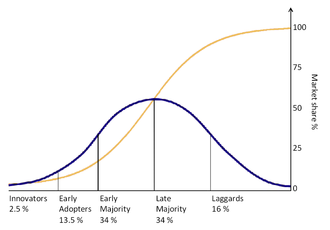Perspectives and Challenges of Globalization for Technology Firms
 I have been working with globalization for technology firms for more than 30 years.
I have been working with globalization for technology firms for more than 30 years.
I started in 1980 as a sales trainee with Control Data Corporation in Minneapolis. I was responsible for selling mainframe computer systems and bespoke software development to enterprise customers in the Scandinavian area. Mainframes and bespoke software development is still around, but it is a very small fraction of the market for computers and software. New markets have emerged and technology is now embraced by everyday users in the form of smart phones, apps, Internet and cloud based services.
Taking technology firms global 30 years ago required a lot of traveling and going to exhibitions and trade shows. From 1980 to 1995 I spent more time in airports, on aircrafts, in hotels, taxis, rental cars, trains and ferries than I did being with my family, my customers and my associates – combined. The world was much less transparent then.
The Internet has changed everything. We still need to travel to meet face to face with people, but all the preliminary research and a lot of the initial contacts and follow-up can be performed remotely. I still do business world wide, but I only travel a fraction of what I used to.
Collaboration platforms such as Basecamp, Skype, Salesforce.com, Yammer and many many more have enabled virtual collaboration to an extent where physical distance is not such a big issue anymore.
and then the “bad” news…
But there are a couple of fundamental issues that have not changed at all. In this blog post I will deal with the two biggest challenges facing technology firms with ambitions for a global presence.
- The Law of Diffusion of Innovation
- Culture (and the double barrier)
While so much technology has changed and while the speed of change only seems to accelerate, Homo Sapiens changes much, much slower.
The Law of Diffusion of Innovation (Technology)
The “Law” was introduced by Professor Everett Rogers in 1962. It was Geoffrey Moore who made the principle known to a broader public when he published his book “Crossing the Chasm” in 1991 with a revised edition in 1999 (hello Internet).
The Law essentially divides people into 5 groups (Roger’s naming first – Moore’s second):
- Innovators (2,5%) – Technology Enthusiasts
- Early Adopters (13,5%) – Visionaries
- Early Majority (34%) – Pragmatists
- Late Majority (34%) – Conservatives
- Laggards (16%) – Skeptics
If you are a technology firm working on conquering the world you most likely have something new and exciting to offer. Your challenge is that only the first two groups will listen to you (15%). The rest of the market (85%) will turn their heads the other way. If you don’t know the “Law” you will be frustrated by the rate of rejection you experience in the market. You will also be wasting your scarce resources and time preaching to deaf ears.
Early and Late Majority Adopters are not fascinated by new technology. They are more interested in seeing the technology being used by other people and companies with whom they can relate, before they buy in. They are much less interested in what you do and very much interested in who else is using it. Actually Early and Late Majority are scared to death by anything new.
You can forget about the Laggards, they will not buy-in until their current “modus operandi” breaks down and can’t be replaced anymore.
How do you find the Innovators and the Early Adopters?
Geoffrey Moore claims that the Innovators and Early Adopters will find you! Make yourself visible and your phone will start ringing!
While Geoffrey Moore is a brilliant author, he apparently never was a salesman with a quota for a technology company at the foot of the diffusion climb. You need to get out there and talk to people, you must experiment with your messages and you must work through your network to find those few people who will “get it”. It is a lot of hard work and it’s a lot of rejection as you wrestle with Pragmatists, Conservatives and Laggards.
Knowing and accepting the “Law” will make your life easier. It will help you classify and qualify the prospects in your pipeline AND get out of there fast if you smell a Pragmatist, Conservative or Laggard (save them for later).
Culture and the double barrier
I live and work in Europe. More precisely: Denmark. The Danish market represents 0,36% of the global demand for technology. Imagine that you have been working for a couple of years in Denmark and you have now made it past the [slider title=”Tipping Point”] Introduced by Malcolm Gladwell in his book with the same name first published in 2000. Gladwell defines a tipping point as “the moment of critical mass, the threshold, the boiling point.” When you pass the Tipping Point momentum sets in and demand for your product or services is generated by the market, without your involvement.[/slider]
You are successful and you are so excited.
Based on the success in Denmark you buy a ticket to Frankfurt to start penetrating the German market. Only to realize that you have to start all over again. The Germans will undoubtedly find you are a nice person, but they have never heard about your company, they never heard about your customers and you don’t even have an office in Germany. They will speak English with you if you want to purchase something, but if you want to sell them something: “Bitte in Deutsch.”
US companies can grow beyond the global Tipping Point just by being successful in their domestic market. Or at least they can grow to a size where they have the muscle to invest heavily in global market penetration. Companies in [slider title=”the smaller markets “] Denmark, Norway, Sweden, Finland, Austria, Switzerland, Israel, Portugal, Belgium, The Netherlands and many many more [/slider] don’t have this luxury.
Knowing and accepting the “Law” will make your life easier when planning and executing your globalization strategy. There are countries which are more open to new technology than others. There are countries where it is much easier to get access to technology decision makers than others. Look for the Innovators and Early Adopters across borders and care less about geography.
The passion, the ambition and the commitment
One final note on Globalization. Your ambition must be to conquer the world. Nothing less. If you are just out there to make a few extra bucks, you will fail.
Globalization is tough, very tough. Without the passion, the ambition and the commitment, you will not be able to mobilize the stamina which is required to deal with the tons of challenges and setbacks you will experience along the way.
The good news is that with passion, ambition and commitment you can achieve much more, much faster than the corporate soldiers with their big budgets and their thick binders filled with policies & procedures.
Making it from scratch to the Tipping Point is fun. When you make it past the Tipping Point you can leave it to others. New mountains are waiting to be climbed.
Good luck to you!











